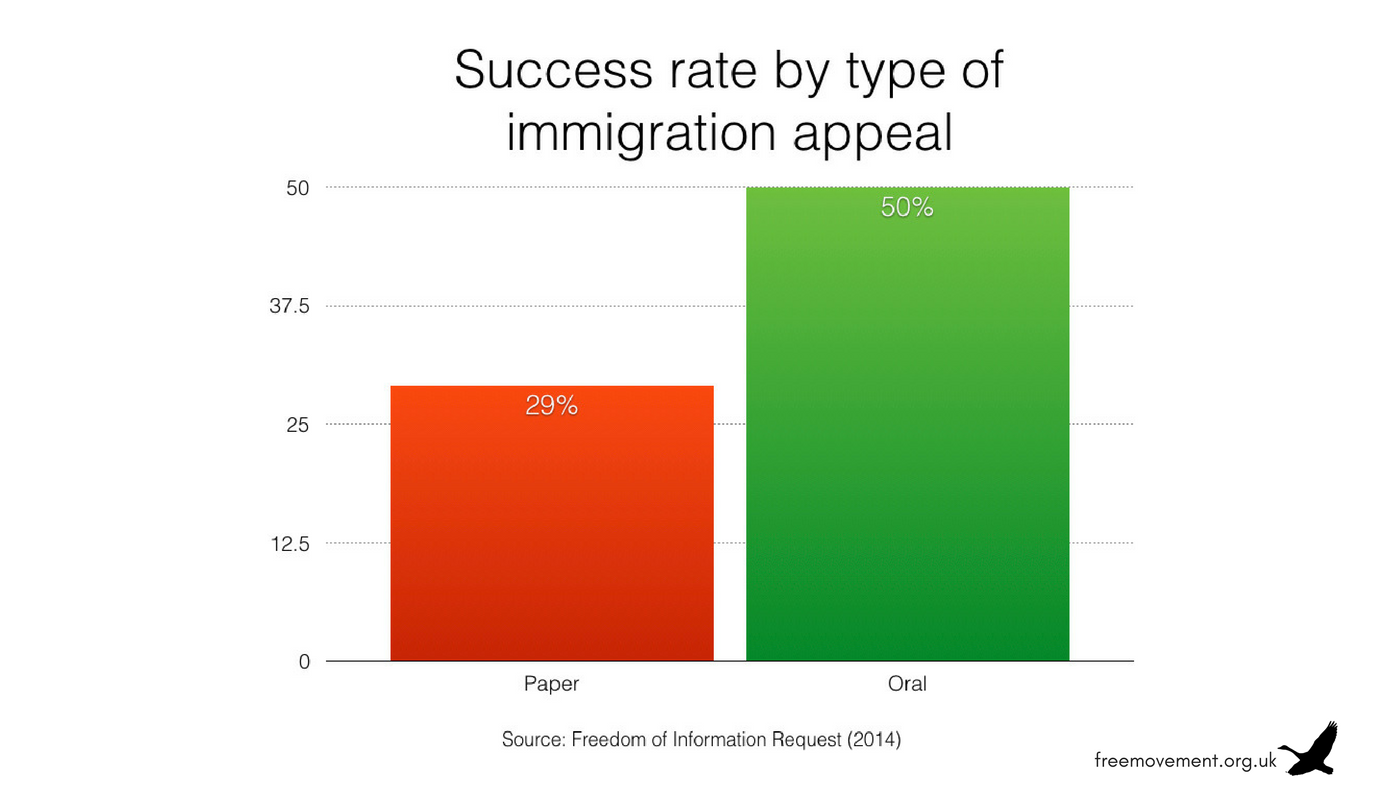- BY Colin Yeo

Success rate for oral compared to paper immigration appeals
THANKS FOR READING
Older content is locked

A great deal of time and effort goes into producing the information on Free Movement, become a member of Free Movement to get unlimited access to all articles, and much, much more
TAKE FREE MOVEMENT FURTHER
By becoming a member of Free Movement, you not only support the hard-work that goes into maintaining the website, but get access to premium features;
- Single login for personal use
- FREE downloads of Free Movement ebooks
- Access to all Free Movement blog content
- Access to all our online training materials
- Access to our busy forums
- Downloadable CPD certificates
What do you get for your money when you pay for an oral over a paper hearing in the immigration tribunal? Since the introduction of much higher appeal fees in October 2016, the price difference is now between £490 for an “on the papers” decision and £80o for a proper oral hearing, even before paying for a lawyer to turn up.
Is it really worth paying the extra for a full hearing?
The difference is that an “on the papers” hearing is not really a hearing at all. Both sides have a chance to send in written evidence and submissions and a judge will then review the paperwork and issue a decision without seeing anyone in person.
A full oral hearing takes place at a tribunal hearing centre, both sides have a chance to submit evidence and submissions in advance, but at the hearing they then supplement the evidence and the submissions in person, either with or without a lawyer.
Lawyers would in many cases say that it is worth paying for an oral hearing. But we would, wouldn’t we?
I would say that written evidence and submissions will rarely carry the same weight and persuasive value as live evidence and submissions, and an oral hearing with real human beings in front of a judge reminds the judge that real lives are affected. It is all too abstract and academic when dealt with on the papers only.
What does the data say? The best statistical information available seems to be courtesy of Professor Robert Thomas, who made a successful Freedom of Information request for the data in 2014.
Overall, the statistics showed that there was at that time a 50% success rate for oral appeals and a 29% success rate for paper appeals. Most of the paper appeals were then family visit cases and there was some variation between different types of appeal. In total, there were 339,483 oral appeals – of which 168,850 (50%) were allowed. There were 89,039 paper appeals of which 26,015 (29%) were allowed.

There may have been changes since then, but this is the best indication we currently have of an appellant’s chances of success by the type of appeal they pursue. It probably is worth paying for an oral hearing in most cases, if you can afford it.
SHARE

